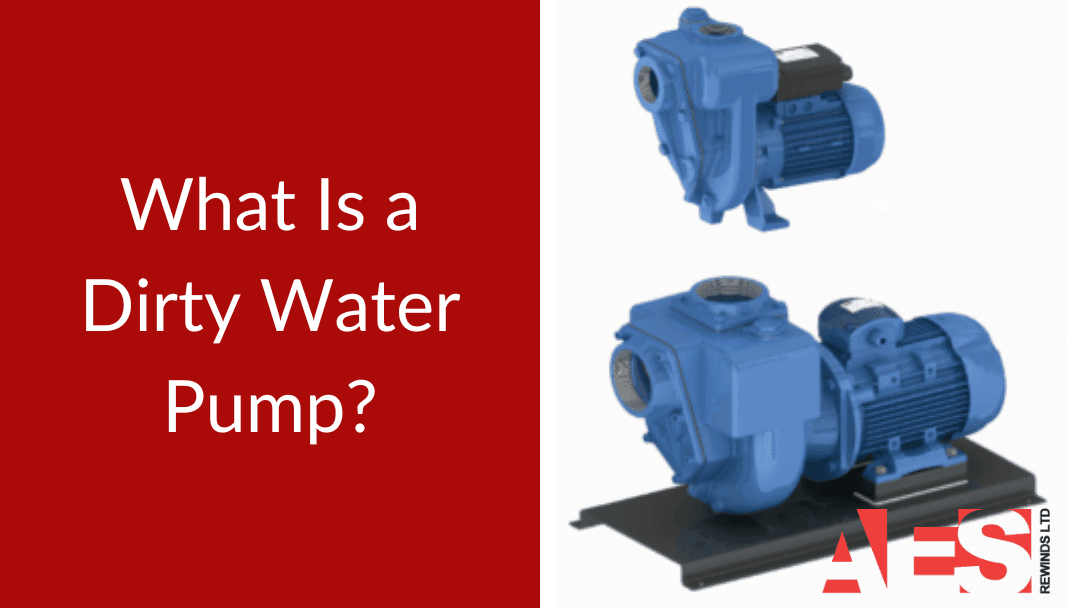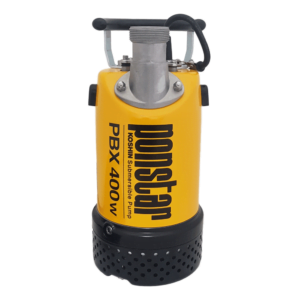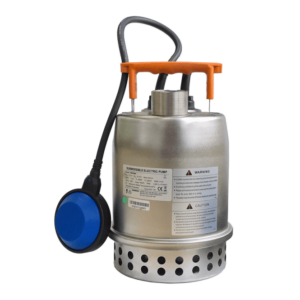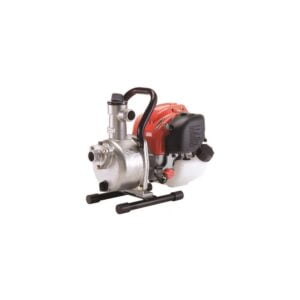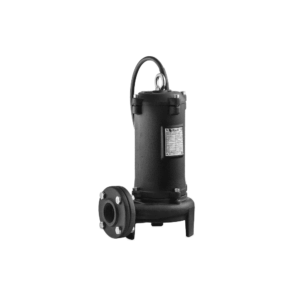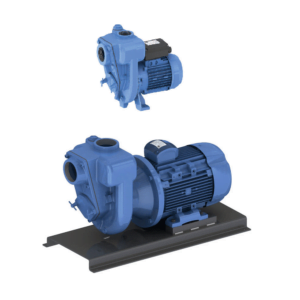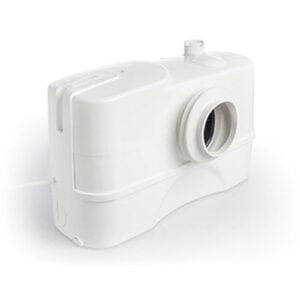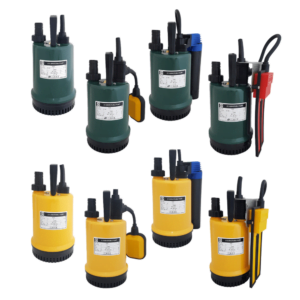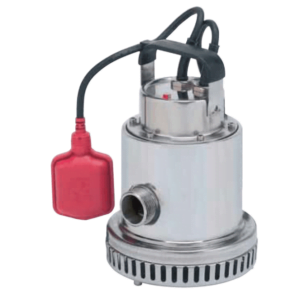If you’ve ever dealt with a flooded basement, a waterlogged construction site, or a muddy garden pond that needs emptying, you’ll know that not all water is created equal. Whilst clean water might flow away happily with any old pump, dirty water is a different beast entirely. That’s where dirty water pumps come in – the unsung heroes of drainage and dewatering.
What Exactly Is a Dirty Water Pump?
A dirty water pump is a specialised type of drainage pump designed to handle water that contains solid particles, debris, and sediment. Unlike standard clean water pumps, these robust workhorses can cope with mud, sand, silt, leaves, small stones, and other suspended solids without clogging or breaking down.
Think of it as the difference between a delicate sieve and a proper colander – one’s designed for tea leaves, the other can handle chunky vegetables. Dirty water pumps are built with larger tolerances, more robust impellers, and stronger casings to withstand the abrasive nature of particle-laden water.
The magic lies in their design. Most dirty water pumps are submersible, meaning they can be placed directly into the water you need to shift. They feature specially engineered impellers with wider passages that allow solid particles to pass through without jamming the system. This makes them absolutely essential for situations where clean water pumps would fail within minutes.
How Do Dirty Water Pumps Work?
The operation of a dirty water pump is remarkably straightforward, which is part of their appeal. When you place the pump into the water and switch it on, the electric motor – which is hermetically sealed to prevent water ingress – powers an impeller that spins at high speed.
This spinning impeller creates a pressure difference: lower pressure at the inlet draws water (and any debris within) into the pump, whilst higher pressure at the outlet pushes it out through your discharge hose. The clever bit is in the impeller design. Dirty water pumps typically use open or semi-open impellers with wider vanes and larger gaps, allowing particles to flow through without causing blockages.
Many models also come equipped with a float switch – a buoyant device that automatically turns the pump on when water levels rise above a certain point and switches it off again when levels drop. This automatic operation is brilliant for situations where you can’t constantly monitor the pump, such as overnight drainage or in remote dewatering applications.
If you’re interested in understanding more about pump terminology and how different pump systems work, our A-Z of Pump Terminology guide is a great resource.
Key Features and Specifications: What to Look For
When choosing a dirty water pump, understanding the key specifications will help you select the right model for your needs:
Maximum Particle Size: This is arguably the most critical specification. Dirty water pumps typically handle particles ranging from 5mm up to 40mm in diameter, depending on the model. Entry-level pumps might manage particles up to 25mm, whilst heavy-duty models can cope with chunks up to 40mm. Always check this specification against the type of debris you’ll be pumping.
Flow Rate: Measured in litres per hour (l/h) or litres per minute (l/min), this tells you how much water the pump can shift. Domestic models typically range from 9,000 to 25,000 litres per hour, whilst industrial pumps can move significantly more. For context, a pump rated at 15,000 l/h can empty a standard 1,000-litre IBC tank in about four minutes.
Maximum Head Height: This specification, measured in metres, indicates how high the pump can push water vertically. If you need to pump water up from a basement or over a significant distance, you’ll need a pump with adequate head height. As a rough rule of thumb, one metre of vertical lift is equivalent to approximately ten metres of horizontal distance.
Motor Power: Typically ranging from 300W to over 1,000W for domestic and light commercial use, the motor power influences both the pump’s capacity and its energy consumption. More powerful doesn’t always mean better – choose a pump that matches your requirements to avoid wasting energy.
Dirty Water vs Clean Water vs Sewage Pumps: What’s the Difference?
Understanding the distinctions between these pump types is crucial for selecting the right equipment:
Clean Water Pumps are designed for water with minimal or no solid content – think swimming pools, rainwater tanks, or well water. They typically can’t handle particles larger than 1-5mm and feature tighter tolerances and smaller impeller passages optimised for efficiency. Using a clean water pump for dirty water will almost certainly result in clogging and potential damage. Our guide on what is a drainage pump explores these differences in more detail.
Dirty Water Pumps occupy the middle ground. They’re built to handle suspended solids and abrasive materials but aren’t designed for raw sewage or water with very large solid content. The water should still be predominantly liquid, just with added “bits” – mud, sand, silt, leaves, and small stones are all fair game.
Sewage Pumps are the heavy-duty option, designed to handle water containing larger solids, fibrous materials, and even human waste. They often feature macerator or grinder mechanisms that break down solid matter before pumping. These pumps have larger passage sizes and are built with materials that resist corrosion from potentially aggressive wastewater. If you’re dealing with actual sewage or water with substantial solid content, you’ll want to explore our resources on how sewage pumps work and how to choose a sewage pump.
The critical thing to remember is that using the wrong pump type can lead to expensive failures. A clean water pump pressed into dirty water service will clog and burn out, whilst using a sewage pump for relatively clean water wastes energy and money on unnecessary capacity.
Where Are Dirty Water Pumps Used? Common Applications
Dirty water pumps are remarkably versatile pieces of kit, finding use across a wide range of domestic, commercial, and industrial applications throughout the UK:
Flood Water Removal: Perhaps the most critical application in the UK, where flooding events seem increasingly common. When your basement, cellar, or garage floods, a dirty water pump can quickly remove the standing water before it causes lasting damage. Unlike clean water pumps, they’ll cope with the inevitable mud, silt, and debris that comes with floodwater. For more on dealing with flooding scenarios, check out our guide to flood pumps.
Construction Site Drainage: Building sites are notorious for collecting water in trenches, excavations, and foundations. Heavy rain can bring work to a standstill, costing time and money. Dirty water pumps allow contractors to continue working by keeping excavations dry, even when dealing with muddy, silt-laden water. Many site managers keep engine-driven pumps as backup for locations without mains power.
Garden and Pond Maintenance: Emptying a garden pond for cleaning or maintenance generates water full of algae, plant matter, leaves, and sediment. A dirty water pump makes short work of this task without the constant clogging you’d experience with a clean water pump. They’re also brilliant for draining waterlogged gardens after heavy rainfall.
Sump Pump Applications: Many properties, particularly those with basements or built in low-lying areas, rely on sump pumps to manage groundwater. When the sump collects water that contains particles – which most do – a dirty water pump is essential. If you’re considering a permanent installation, our guides on do you need a sump pump, what size sump pump you need, and our comprehensive guide to sump pumps will help you make the right decision.
Agricultural Use: Farms frequently need to move water from ditches, animal pens, or muddy fields. The water in these situations is rarely clean, making dirty water pumps essential farm equipment.
Industrial Process Water: Many industrial processes generate water containing suspended solids, whether from cooling systems, washing operations, or manufacturing processes. Dirty water pumps are vital for managing this process water efficiently.
Emergency Response: Fire services, flood response teams, and emergency services rely heavily on dirty water pumps. When time is critical and water quality is unpredictable, these pumps deliver reliable performance.
The Benefits: Why Choose a Dirty Water Pump?
Versatility: One pump can handle multiple tasks around your property. The same unit that drains your flooded basement can empty your pond or clear your waterlogged garden.
Robust Construction: Built to withstand abrasive materials, dirty water pumps typically feature hardened components, corrosion-resistant materials, and reinforced casings. This durability translates into longer service life and better value for money.
Automatic Operation: Models equipped with float switches require no babysitting. Once set up, they’ll automatically maintain water levels without your intervention, protecting against both flooding and dry-running damage.
Energy Efficiency: Modern dirty water pumps are surprisingly efficient. Quality models can reduce energy consumption whilst maintaining high performance. When paired with automatic controls, they only run when needed, further reducing energy costs and environmental impact.
Cost-Effectiveness: Whilst dirty water pumps cost more than basic clean water models, they’re significantly cheaper than sewage pumps. For most domestic and light commercial applications, they represent the sweet spot between capability and cost.
Ease of Use: Most dirty water pumps feature a simple “drop and go” design. Lower the pump into the water, connect your discharge hose, plug it in, and you’re done. No complex installation or specialist knowledge required.
Choosing the Right Dirty Water Pump for Your Needs
Selecting the appropriate pump requires considering several factors:
Assess Your Water Quality: Take stock of the maximum particle size you’ll encounter. Leaves and small stones? A pump rated for 25mm particles should suffice. Larger debris or very muddy water? Look for 35-40mm capability.
Calculate Your Flow Requirements: How quickly do you need to shift water? For emergency flood situations, higher flow rates (18,000+ l/h) make sense. For routine drainage tasks, more modest rates may suffice. Remember that higher flow rates typically mean higher power consumption.
Consider Your Pumping Distance and Height: Measure both the vertical lift and horizontal distance you need to pump. Choose a pump with adequate head height for your requirements, allowing a safety margin for friction losses in long hose runs.
Power Source: Will you have mains electricity available? If not, consider engine-driven pumps or petrol engine water pumps, which offer excellent portability and independence from the electrical grid.
Automatic vs Manual: Decide whether you need automatic operation via float switch or if manual control is acceptable. For unattended operation or permanent installations, automatic pumps provide peace of mind.
Build Quality: Pay attention to materials – stainless steel components offer superior corrosion resistance compared to plastic, whilst cast iron provides excellent durability for industrial applications. The quality of the motor is equally important – look for models with thermal overload protection and sealed bearings.
For a deep dive into pump selection, our article on how to choose the right booster pump covers principles that apply across pump types.
Products by Category
Koshin Ponstar PBX 55022 230v Automatic Pump
£376.75 +VATOreal CK Stainless Steel Sump Pump CK100M
£210.46 +VATOreal CK Stainless Steel Sump Pump CK45M
£142.15 +VATKoshin SEH-25H Honda Engine Petrol Powered Pump
£454.38 +VATOliju SGR 40.150 Manual UAL 230v Sewage Grinder Submersible Pump
£765.65 +VATGMP Electric Surface Trash Self Priming Pump – B2KQA-ST TRASH EAR3 230v
£805.36 +VATDab Genix 110 Self Contained Toilet Waste Pumping Unit
£358.64 +VATJS RS-100 230v 1″ Light Duty Drainage Pump
£115.24 +VATPentair Jung Drenox 80/7 Automatic 230v Drainage Pump
£302.23 +VAT
Maintaining Your Dirty Water Pump: Tips for Longevity
Proper maintenance can extend your pump’s life from a few years to well over a decade. Here’s how to keep your pump running smoothly:
Clean After Each Use: After pumping, flush the pump with clean water to remove any residual debris. Simply run clean water through the pump for a few minutes, or use a hose to rinse through the outlet port. This prevents sediment from hardening inside the pump.
Regular Inspections: Every few months, check the pump for signs of wear, damage, or corrosion. Inspect the power cable for any damage, ensure all fittings are secure, and look for any cracks in the housing.
Check the Impeller: Periodically inspect the impeller for damage or debris accumulation. Remove any tangled vegetation or debris that might have worked its way past the inlet screen.
Test the Float Switch: If your pump has automatic operation, regularly test the float switch to ensure it moves freely and triggers the pump correctly. Float switches can become fouled with debris or scale, affecting their operation. Our float switch guide provides detailed maintenance advice.
Winter Storage: If you won’t use the pump during winter, clean it thoroughly, drain all water from the unit, and store it in a frost-free location. Frozen water can cause catastrophic damage to pump components.
Seal Maintenance: Check seals and gaskets regularly. These components prevent water from reaching the motor and are critical for pump longevity. Replace them at the first sign of wear.
Lubrication: Some pumps require periodic lubrication of bearings or other moving parts. Consult your pump’s manual for specific requirements.
If you’re maintaining a sump pump installation, our article on how to clean a sump pit and how to clean your sump pump offer comprehensive guidance.
Troubleshooting Common Issues
Pump Won’t Start: Check the obvious first – is it plugged in? Is the power supply working? Next, verify that the float switch (if fitted) isn’t stuck in the “off” position. Finally, check for thermal overload protection that may have tripped.
Reduced Flow Rate: This often indicates a partial blockage. Check the inlet screen and impeller for debris. Also verify that your discharge hose isn’t kinked or blocked.
Pump Runs But Doesn’t Move Water: An airlock might be the culprit. Tilt the pump gently whilst submerged to release trapped air. Also check that the discharge hose isn’t blocked.
Excessive Noise: Unusual sounds often indicate debris caught in the impeller or worn bearings. Switch off and inspect the pump immediately.
Frequent Cycling: If your automatic pump switches on and off too frequently, adjust the float switch position to increase the differential between on and off levels.
Industrial-Strength Solutions
For heavy-duty applications requiring industrial water pumps, AES Rewinds offers a comprehensive range of robust solutions. When standard dirty water pumps aren’t quite enough, our three-phase motors provide the power and reliability demanded by industrial environments.
For sites requiring sophisticated water management, our range of controls can automate pump operation, monitor performance, and protect your investment through advanced control systems.
Final Thoughts
Dirty water pumps are invaluable tools that can save you time, money, and considerable hassle in countless situations. Whether you’re dealing with flooding, maintaining your garden, managing a construction site, or handling industrial wastewater, choosing the right pump makes all the difference.
The key is matching the pump’s specifications to your specific requirements – don’t over-spec and waste money on capacity you’ll never use, but equally don’t under-spec and end up with a pump that can’t handle your toughest jobs.
With proper selection, use, and maintenance, a quality dirty water pump will serve you reliably for many years, ready to tackle whatever wet and muddy challenges come your way.
Need Expert Advice?
Choosing the right pump can be daunting, especially with the wide range of options available. At AES Rewinds, we’re here to help. Our team of experts can guide you through the selection process, ensuring you get exactly the right pump for your needs.
Whether you need a domestic dirty water pump for occasional use, a permanent sump pump installation, or industrial-grade dewatering equipment, we’ve got you covered.
Don’t struggle with the wrong equipment or waste money on a pump that doesn’t meet your needs. Get in touch with our team today for friendly, expert advice tailored to your specific situation. We’re always happy to discuss your requirements and help you find the perfect solution.

